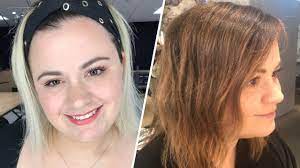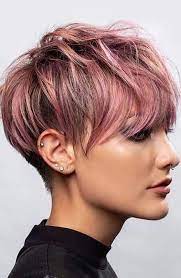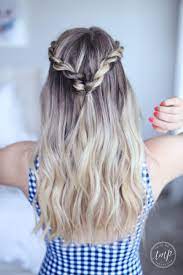
It’s best to start at the back and bottom sections when bleaching, since these areas typically have darker hair that can tolerate more bleach without becoming damaged by it. Be prepared to spend several hours at your salon for this session!
Moisturizers and reconstructing hair masks can help your locks remain healthy after bleaching, but be wary of heat-intensive treatments like blow dryers or flat irons for the duration of this treatment.
Know Your Hair
Bleaching can wreak havoc on your locks, stripping out natural pigments and leaving them vulnerable. How well your hair handles bleaching will depend on its initial health and if you’ve ever bleached before.
Going from dark shades of hair to platinum blonde can take multiple sessions and considerable maintenance, without even considering balayage or highlights!
Faye notes that your hair’s condition and history also play an integral part in how light you can go with bleaching treatments. “For instance, chemically treated or relaxed locks do not take to bleaching well,” according to Faye.
Matt Rez notes that those types of strands typically have tighter hair shaft structures and will take longer to lift, unlike virgin, untreated strands. For less damage and to keep hair healthier, he suggests starting with a lower volume developer and applying moisture masks before bleaching; also, skipping shampooing before bleaching as this strips your strands of natural oils that protect the scalp against bleach damage.
Know Yourself
All bleaches cause damage to the protein structures of hair, with regular bleaching intensifying this damage. Therefore, consulting a hair professional is advised to reach your desired blonde shade and keep your locks healthy between sessions.
When bleaching your hair at home, you must follow the instructions on the box carefully. For instance, always begin with clean hair (avoid washing it the night or two prior) since washing strips away the natural oils that strengthen it against chemical treatments and makes your strands weaker and more susceptible.
Mesquite suggests performing a “stretch test” on a section of hair before leaving bleach in for too long. “If it feels stretchy, rinse immediately; this may indicate that too much moisture has been drawn away by bleach.” This could lead to breakage and an overall limp-looking appearance in your locks.
Know Your Stylist
Bleaching hair is a chemical process that causes irreparable harm, with damage becoming increasingly visible after each bleach session and ultimately stopping its color absorption altogether.
Your investment of both time, money, and energy in bleaching increases as often as you bleach, necessitating further touch-ups of your look and more frequent bleaching sessions. This results in more money, time, and commitment to maintain it.
Your hair becomes weaker after each bleaching treatment, leaving it more susceptible to exposure to other chemicals and non-chemical hazards. For instance, brushing wet hair or using cotton pillowcases regularly could expose it to these hazards and damage your bleached locks over time. You must, therefore, limit these activities to keep them healthy.
Depending upon your natural hair color, desired shade, and genetic makeup, bleaching sessions may take multiple sessions before reaching the desired results. To prevent overprocessing your locks, strictly follow all bleach instructions and only leave them on for 30 minutes each session.
Know the Cost
Bleaching hair causes microscopic damage on an individual level and strips natural pigments away, so depending on your genetic makeup, existing hair color, frequency of bleaching sessions, and desired look (i.e., platinum blonde or light yellow), bleaching sessions may need to be repeated multiple times to achieve your desired hue.
In addition, your locks will require unique aftercare products like purple shampoos and conditioners if they turn brassy or orange over time – this means an increased budget for products such as purple shampoos and conditioners.
Checking whether your hair can handle bleaching involves a quick “stretch test.” Take a sample section of strands and gently tug on it; if it feels stretchy or stretchy-gummy, there may have been too much bleach, and you should immediately wash it out; otherwise, it should be fine! Also, remember that bleached hair tends to become drier more quickly, so shampooing less frequently keeps the strands nourished with proper products that keep moisture at bay and help your locks hydrate them!

